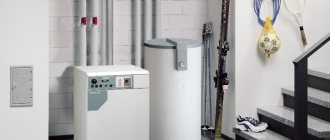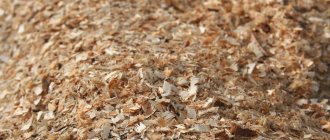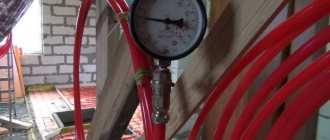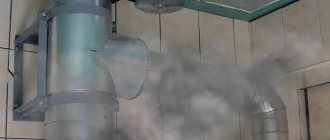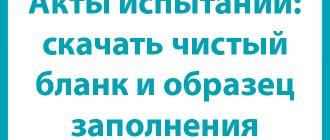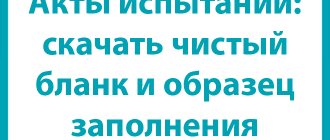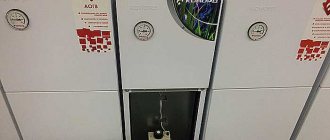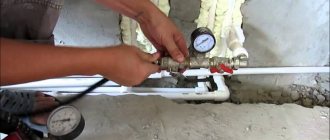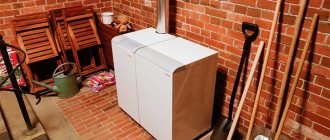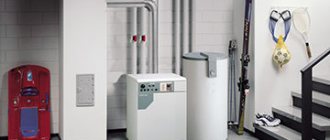Operational and adjustment tests (RNT) of boilers:
1) Drawing up and agreeing with the Customer on a program for operational testing of boilers; 2) Adjustment of boilers in accordance with the test program under technological load: 30%, 55%, 75%, 95%; 3) Detection of air suction into the furnace and flue ducts of boilers; 4) Determination of technical and economic parameters (gross efficiency, heat losses, specific fuel consumption per 1 Gcal of generated heat), environmental (O2 concentration; CO; NO; SO2 in flue gases) and operational indicators of boilers; 5) Determination of the actual aerodynamic resistance of the air and gas path of boilers; 6) Determination of the optimal fuel-air ratio for setting up automation systems; 7) Issuing recommendations and measures to improve the reliability and efficiency of the main and auxiliary equipment; Processing of test materials, preparation and issuance of technical reports valid until the next equipment adjustment; 9) Registration of regime maps, in accordance with the Guidelines for drawing up regime maps of boiler installations and optimization of their management (RD 34.25.514-96) for maintenance personnel, indicating optimal operating modes, valid for 5 (five) years until the next equipment adjustment .
2) Adjustment of boilers in accordance with the test program under technological load: 30%, 55%, 75%, 95%; 3) Detection of air suction into the furnace and flue ducts of boilers; 4) Determination of technical and economic parameters (gross efficiency, heat losses, specific fuel consumption per 1 Gcal of generated heat), environmental (O2 concentration; CO; NO; SO2 in flue gases) and operational indicators of boilers; 5) Determination of the actual aerodynamic resistance of the air and gas path of boilers; 6) Determination of the optimal fuel-air ratio for setting up automation systems; 7) Issuing recommendations and measures to improve the reliability and efficiency of the main and auxiliary equipment; Processing of test materials, preparation and issuance of technical reports valid until the next equipment adjustment; 9) Registration of regime maps, in accordance with the Guidelines for drawing up regime maps of boiler installations and optimization of their management (RD 34.25.514-96) for maintenance personnel, indicating optimal operating modes, valid for 5 (five) years until the next equipment adjustment .
What does the boiler operating map display?
Almost all indicators, which, as a rule, consist of this document, are indicated in percentages.
These indicators provide us with the following data:
- gases in percentage: carbon, oxygen, carbon monoxide;
- the volume of gas that is located outside the boiler structure;
- efficiency factor of the unit (gross, net);
- the amount of heat losses that accompany the process of burning fuel (including gas);
- amount of heat loss due to chemical underburning;
- the percentage of heat that is lost when the heaters operate.
These are only the main indicators in the boiler operation chart; there are several additional ones:
- the volume of steam that is formed over a certain time period;
- steam temperature at outlet;
- air pressure in burners;
- gas pressure.
All indicators have their own units of measurement - degrees, for example, pascals, etc. All boilers must have regime maps.
Example of a boiler operating map
Such cards are needed for the competent operation of gas and steam devices, as well as water heaters.
The main advantage of this document, which allows you to monitor the performance of the unit, is that when using it, you can independently observe all functional changes. Let’s say you can understand the degree of air pressure required for a certain load on the equipment. In addition, the fuel must burn completely and the equipment must be safe.
You can find out what the service life of a gas boiler depends on in this article
Operational and adjustment tests of the chemical water treatment plant (hereinafter referred to as the WTP):
1) Drawing up and coordination with the Customer of a program for operational and commissioning tests of the ToVP; 2) Adjustment of the boiler room HVP system is carried out in accordance with the load test program within the boiler operation limits (30%-95% of the boiler load); 3) Calculation of operating standards: quantity, productivity of devices, temperature, dose of reagents, water consumption during purging, rinsing, regeneration, under various operating conditions of the HVP installation; 4) Identification of the main values of excess consumption of water, acid and salt for regeneration; 5) Selection of favorable operating modes of the water vapor treatment plant with the preparation of regime maps, in accordance with the Methodological guidelines for the development of instructions and regime maps for the operation of pre-boiler water treatment plants and for maintaining the water chemistry regime of steam and hot water boilers (RD-10-179-98), for maintenance personnel indicating the optimal operating modes, valid until the next adjustment of the equipment; 6) Processing of test materials, preparation and issuance of technical reports, valid until the next adjustment of equipment, indicating the maximum permissible indicators of water quality: mineralization (salinity), total hardness, total alkalinity, content of suspended impurities (transparency), oxidability, iron content, value pH and other indicators that affect the operation of cold water heaters, as well as condensate returned from production, and condensate after water heaters (mains, DHW).
Drawing up a regime map for the water chemical regime (hereinafter referred to as the water chemistry regime) of boilers:
1) Checking the operation of boilers in continuous and periodic blowdown modes with calculation of operating standards; 2) Listing of all necessary modes of corrective treatment of feed and boiler water; 3) Indication of the recommended doses of corrective reagents, the location of their introduction and an indication of the method of monitoring the relevant processes; 4) Indication of boiler water quality standards, both recommended by the boiler manufacturer and established in accordance with the test program; 5) Carrying out sampling in accordance with GOST R51592-2000 “Water. General requirements for sampling" and GOST R51593-2000 "Drinking water. Sampling" (steam, source water, condensate, pre-boiler water, feed water - before and after the installation of the hot water vaporizer, return condensate), inspection of the cold air vaporizer installation; 6) Making the necessary adjustments to the instructions for conducting water chemistry; 7) Processing of test materials, preparation and issuance of technical reports valid until the next adjustment of the equipment; Preparation of instructions and regime cards, in accordance with the Guidelines for the development of instructions and regime cards for the operation of pre-boiler water treatment plants and for maintaining the water-chemical regime of steam and hot water boilers (RD-10-179-98), for operating personnel, with instructions various operating modes valid until the next equipment adjustment.
2) Listing of all necessary modes of corrective treatment of feed and boiler water; 3) Indication of the recommended doses of corrective reagents, the location of their introduction and an indication of the method of monitoring the relevant processes; 4) Indication of boiler water quality standards, both recommended by the boiler manufacturer and established in accordance with the test program; 5) Carrying out sampling in accordance with GOST R51592-2000 “Water. General requirements for sampling" and GOST R51593-2000 "Drinking water. Sampling" (steam, source water, condensate, pre-boiler water, feed water - before and after the installation of the hot water vaporizer, return condensate), inspection of the cold air vaporizer installation; 6) Making the necessary adjustments to the instructions for conducting water chemistry; 7) Processing of test materials, preparation and issuance of technical reports valid until the next adjustment of the equipment; Preparation of instructions and regime cards, in accordance with the Guidelines for the development of instructions and regime cards for the operation of pre-boiler water treatment plants and for maintaining the water-chemical regime of steam and hot water boilers (RD-10-179-98), for operating personnel, with instructions various operating modes valid until the next equipment adjustment.
Who develops and approves the boiler operating map and other nuances
To fill out such a document, it is necessary to carry out quite a lot of tests and measurements, and they are carried out during manufacturing and commissioning. There are special companies that carry out commissioning and commissioning work. So they are doing testing. This is carried out every three years, but other auxiliary calculations are also possible.
The operating maps of hot water boilers themselves are, by and large, an ordinary table, which consists of a certain number of columns (from 2 to 5). The quantity depends only on what specific operating modes a particular model of the unit will be adapted to. There can be several of these modes:
- 30 %;
- 50 %;
- 79 %;
- 100 %.
As for the number of lines, it is quite difficult to indicate it with accuracy, because they will display all the previously indicated indicators separately.
It is worth remembering that the unit of measurement when specifying parameters is in the first column; it does not require a separate column.
In addition, the map can be presented in the form of a graph, but it is not often encountered due to its specificity and inconvenience.
Boiler operating cards are not produced in single copies. There must be at least two of them, possibly more, and one document must necessarily accompany the boiler, often in the form of a sticker on it. When you doubt the safety of the card, make yourself a couple of copies. And for the user’s complete trust in this document, it is desirable to have the company seal of the organization that carried out the commissioning procedures.
Operational and adjustment tests of the deaerator:
1) Drawing up and coordination with the Customer of a program for operational testing of the deaeration unit; 2) Adjustment of the deaeration installation of the boiler room is carried out in accordance with the load test program within the limits of boiler operation (30%-95% of the boiler load); 3) During the process of operational adjustment, clarify the parameters of the heating steam, incoming water and condensate, determine the amount of vapor, set the operating mode of the deaerator and the degree of removal of carbon dioxide and oxygen at various loads. Test the deaeration installation with the automation switched on; 4) Based on the test results, develop and issue to the customer a technical report and a regime map for the operation of the deaerator; 5) Processing of test materials, preparation and issuance of technical reports valid until the next adjustment of the equipment; 6) Processing of test materials, preparation and issuance of technical reports, valid until the next adjustment of equipment, indicating productivity; heating steam pressure; pressure in the deaerator; temperature of chemically purified water entering the deaerator; condensate temperature; temperature of deaerated water; residual oxygen content in feed water; carbon dioxide content in feed water; feed water hardness; feed water alkalinity; condensate hardness; 7) Preparation of instructions and regime cards, in accordance with the Methodological Guidelines for the development of instructions and regime cards for the operation of pre-boiler water treatment plants and for maintaining the water chemistry regime of steam and hot water boilers (RD-10-179-98), for maintenance personnel, indicating the various operating modes valid until the next adjustment of the equipment.
Operational and adjustment tests of the vapor cooler:
1) Drawing up and coordination with the Customer of a program for operational testing of the vapor cooler; 2) Adjustment of the boiler room vapor cooler is carried out in accordance with the load test program within the limits of boiler operation (30%-95% of the boiler load); 3) In the process of operational adjustment, clarify the parameters of incoming steam and water, determine the amount of condensate, set the operating mode of the vapor cooler and the degree of removal of carbon dioxide and oxygen at various loads. Test the vapor cooler with the automation switched on; 4) Based on the test results, develop and issue to the customer a technical report and a performance map for the operation of the vapor cooler; 5) Processing of test materials, preparation and issuance of technical reports valid until the next adjustment of the equipment; 6) Processing of test materials, preparation and issuance of technical reports, valid until the next adjustment of equipment, indicating productivity; incoming steam pressure; pressure in the vapor cooler; temperature of chemically purified water entering the vapor cooler; condensate temperature; residual oxygen content in the condensate; carbon dioxide content in condensate; condensate hardness; condensate alkalinity; condensate hardness; 7) Preparation of instructions and regime maps, in accordance with the Guidelines for the development of instructions and regime maps for the operation of pre-boiler water treatment plants and for maintaining the water chemistry regime of steam and hot water boilers (RD-10-179-98), for maintenance personnel, indicating the various operating modes valid until the next adjustment of the equipment.
Boiler operating map
Any technical device requires careful handling, which is only possible with conscientious adherence to the user instructions developed by the manufacturers. For this reason, you should not throw away anything that is included with the new device - if you yourself cannot do what is written in the instructions, then this information will be needed at least by the specialists who will help you. This is especially true for equipment that has a fairly long lifespan - washing machines, televisions, heating boilers, and so on. And one of such documents related to this category of devices is the boiler operating map.
It is because of this piece of paper that the correct and, most importantly, efficient operation of equipment intended for heating water is possible. It is compiled according to the standard form adopted back in the USSR in 1984.
What should be displayed on the regime map?
Almost all the indicators that actually make up the boiler operating map are shown as percentages. The following data shows us such indicators.
- The ratio of the following gases in percentage: oxygen, carbon monoxide, carbon.
- The volume of gas located outside the boiler device.
- Efficiency of the heating device (gross, net).
- What are the heat losses that accompany the process of burning fuel (in particular, gas).
- What are the heat losses caused by chemical deficiencies?
- Finally, what percentage of heat is lost during the operation of heaters.
These are just the main indicators in the map, but there are a number of additional ones.
- The volume of steam produced over a certain period of time.
- What is the temperature of this steam when it leaves?
- What is the air pressure in the burners?
- What is the gas pressure?
Operational and adjustment tests of a water softening installation:
1) Drawing up and coordination with the Customer of a program for operational testing of a water softening installation; 2) Adjustment of the boiler room water softening installation is carried out in accordance with the load test program within the limits of boiler operation (30%-95% of the boiler load); 3) Calculation of operating standards: quantity, productivity of devices, temperature, dose of reagents, water consumption during purging, rinsing, regeneration, under various operating conditions of a water softening installation; 4) Identification of the main values of excess consumption of water, acid and salt for regeneration; 5) Selection of favorable operating modes for a water softening installation with the preparation of regime maps, in accordance with the Guidelines for the development of instructions and regime maps for the operation of pre-boiler water treatment plants and for maintaining the water chemistry regime of steam and hot water boilers (RD-10-179-98), for maintenance personnel, indicating optimal operating modes, valid until the next adjustment of the equipment; 6) Processing of test materials, preparation and issuance of technical reports, valid until the next adjustment of equipment, indicating the maximum permissible indicators of water quality: mineralization (salinity), total hardness, total alkalinity, content of suspended impurities (transparency), oxidability, iron content, value pH and other indicators that affect the operation of cold water heaters, as well as condensate returned from production, and condensate after water heaters (mains, DHW).
